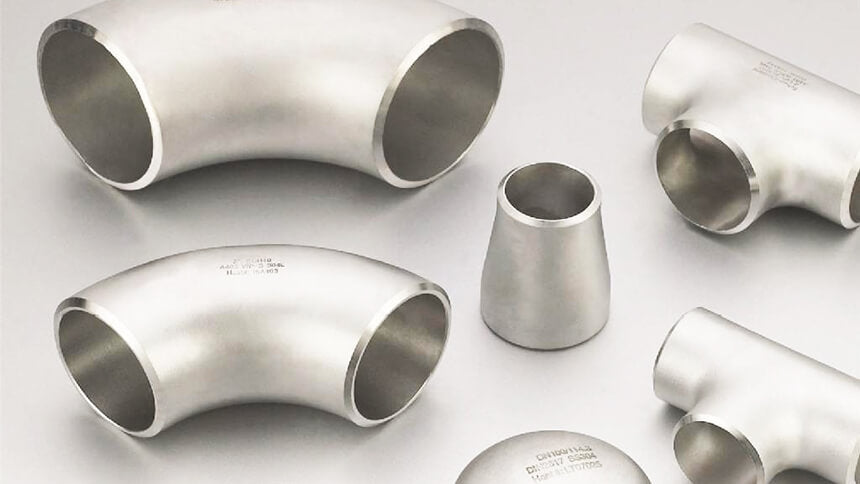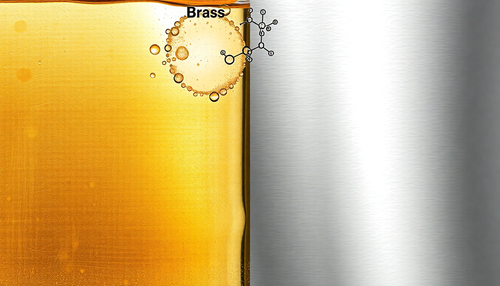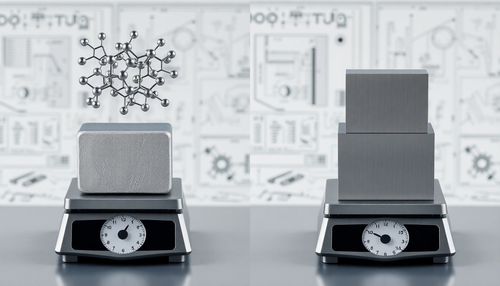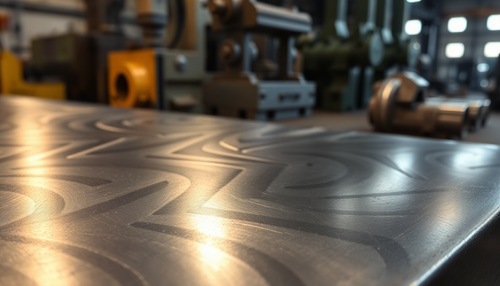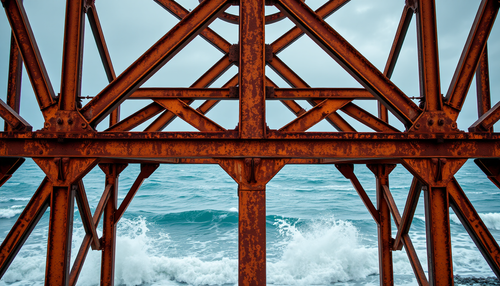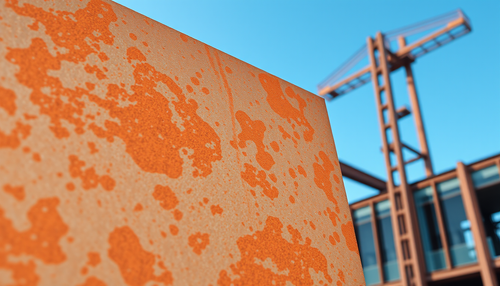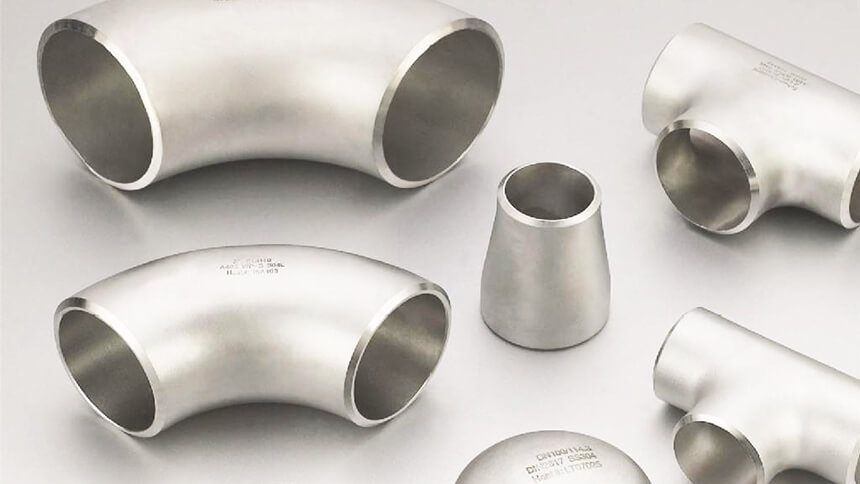
AISI 316 stainless steel (UNS S31600)
AISI 316 stainless steel (UNS S31600) is the second most commonly used austenitic stainless steel. Due to the addition of Molybdenum (Mo), SS 316 shows a great improvement in corrosion resistance and certain properties compared to SS304.
Stainless steel 316L (UNS S31603) is the low carbon version of AISI 316. SS 316 is better than SS 304 in terms of corrosion resistance, heat resistance and certain properties, but the price is higher than AISI 304, For more details, check stainless steel grade 304 vs 316 and 316 vs 316L.
SS 316 Datasheet and Specifications
The data sheet and specifications of ASTM SAE AISI 316 stainless steel are listed in the table below, including chemical composition and properties.
Grade 316 Stainless Steel Properties
The properties of AISI ASTM 316 stainless steel such as chemical composition, physical properties, mechanical properties and magnetic properties are summarized in the tables below.
AISI 316 Chemical Composition
Table 1, composition of AISI 316 stainless steel, more results see the stainless steel composition table.
| Chemical Composition Type 316,% (≤) | ||||||||||
| ASTM | AISI type (UNS) | W | Yes | Mn | P | s | Cr | No | Mo | N |
| ASTM A276/A276M | 316 (UNS S31600) | 0.08 | 1.00 | 2:00 | 0.045 | 0.030 | 16.0-18.0 | 10.0-14.0 | 2:00-3:00 | |
| ASTM A240/A240M | 316 (UNS S31600) | 0.08 | 0.75 | 2:00 | 0.045 | 0.030 | 16.0-18.0 | 10.0-14.0 | 2:00-3:00 | 0.10 |
Grades:
- ASTM A276/A276M : Standard Specification for Stainless Steel Bars and Shapes
- ASTM A240/A240M : Standard specification for chromium and chromium-nickel stainless steel plates, sheets and strips for pressure vessels and general applications
Mechanical properties
The following tables show the mechanical properties of AISI 316 grade stainless steel, such as yield strength, tensile strength, elongation and hardness, etc.
Table 2, Properties of SS 316 Stainless Steel, data is for 25.4 mm (1 in.) diameter bar
| Mechanical Properties of SS 316 | ||||||
| Type | Tensile strength (MPa), ≥ | Yield strength, ≥ (MPa) with 0.2% displacement | Elongation by 50 mm (%), ≥ | Area reduction (%) | Hardness (HBW), ≤ | Illness |
| 316 (UNS S31600) | 580 | 290 | 50 | 79 HRB | Annealed sheet | |
| 550 | 240 | 60 | 70 | 212 | Annealed bar | |
| 620 | 415 | 45 | 65 | 275 | Annealed and cold drawn bar | |
Table 3, ASTM 316 Stainless Steel Properties
| ASTM 316 Mechanical Properties | |||||||||
| ASTM | Type | Tensile strength (MPa) ≥ | 0.2% yield strength ≥ (MPa) | Elongation by 50 mm (%, ≥) | Area Reduction, %, ≥ | Brinell hardness (HBW) ≤ | Rockwell hardness (HRBW) ≤ | products | Conditions |
| ASTM A240/A240M | 316 (UNS S31600) | 515 | 205 | 40 | – | 217 | 95 | Plate, Sheet and Strip | – |
| ASTM A276/A276M | 515 | 205 | 40 | 50 | – | – | Bars and Shapes | Annealed, hot finished | |
| 620 | 310 | 30 | 40 | – | – | Annealed, cold finished, diameter ≤ 12.7 mm | |||
| 515 | 205 | 30 | 40 | – | – | Annealed, cold finished, diameter > 12.7 mm | |||
Physical properties of SS 316 materials
The technical sheet below shows the physical properties of the SS 316 material, such as density, melting point, thermal conductivity, thermal and magnetic expansion, modulus of elasticity, specific thermal capacity, etc.
| Physical Properties of SS 316 | |
| Density of 316 stainless steel (g/cm3) | 8.03 |
| Melting Point of 316 Stainless Steel | 1370-1398℃ |
| Specific heat capacity, J/(Kg·K) | 502 at 20℃ |
| Electrical resistivity, μΩ·m | 0.74 (20℃) |
| Magnetic permeability | 1.02 (approximate) |
| Modulus of elasticity (Modulus of elasticity), GPa | 193 (28× 106 psi) |
| Thermal diffusivity, mm2/s | 4.05 (20-100℃) |
| Thermal conductivity of 316 stainless steel, (W/m·K) | 12.1 (20℃) |
| 16.3 (100℃) | |
| 21.5 (500℃) | |
| Coefficient of thermal expansion, (10 -6 /K) | 15.9 (20-100℃) |
| 16.2 (20-300℃) | |
| 17.5 (20-500℃) | |
316 Magnetic Properties
Type 316 steel is not magnetic, but may be weakly magnetic after cold working.
Heat resistance SS316
SS 316 has good oxidation resistance in intermittent use below 871 °C and continuous use up to 927 °C in air. In the range of 427°C – 857°C, it is best not to continuously use SS 316, but when 316 stainless steel is used continuously outside this temperature range, it has good heat resistance. 316L stainless steel has better resistance to carbide precipitation than AISI 316 and can be used in the above temperature range.
AISI SAE ASTM 316 heat treatment
The heat treatment of AISI 316 stainless steel is summarized in the following content, such as annealing, hardening, etc.
Solution treatment (annealing temperature)
Annealing at a temperature range of 1010-1065 °C and then rapid cooling. The surface of type 316 stainless steel must be thoroughly cleaned before annealing and must be protected with vacuum, hydrogen or inert gas to prevent the formation of an oxide layer during the annealing process.
Homogenization treatment
The temperature for homogenization heat treatment is about 1250°C.
Forging Temperature
The typical forging temperature of AISI 316 stainless steel is 925-1260°C (1700-2300℉).
Hardening
Type 316 SS cannot be hardened by heat treatment, but can be hardened by cold working.
Stress Relief Temperature
When welding 316 stainless steel is not suitable for full annealing, the residual stress can be moderately reduced below 600°C, which makes it have good creep resistance.
Cold work
AISI 316 grade stainless steel is suitable for cold working such as cold heading, cold drawing and cold riveting, but it is harder than carbon steel.
Machining
AISI 316 stainless steel has higher strength and higher work hardening rate than carbon steel and low alloy steel, so it is more difficult to process. Therefore, greater power and lower processing speeds are required, which can result in reduced tool life and difficulty in obtaining a smooth surface.
AISI 316 welding
Type 316 stainless steel has good weldability and does not require preheating, but requires a similar filler material composition but a high alloy content. To avoid solder cracking, ensure that the solder contains 5-10% ferrite during the soldering process. To prevent weld corrosion, the carbon content can be reduced, for example, by using ultra-low carbon 316L stainless steel, stabilized stainless steel or by adding niobium (Nb). For optimum corrosion resistance, smoothness and ductility, SS 316 may require subsequent annealing after welding or heat treatment. Because intergranular corroded chromium carbide is dissolved during the annealing process.
Post-weld heat treatment: If performed, 950-1150°C (1740-2100°F), or stress relief below 650°C (1200°F) to prevent weld deterioration.
Corrosion resistance
AISI 316 stainless steel has better corrosion resistance than 304 stainless steel and has good corrosion resistance in pulp and paper production. Furthermore, SS Type 316 also has good corrosion resistance in aggressive marine and industrial atmospheres.
Following is the application range of corrosion resistance chart of AISI 316 stainless steel in chloride ion medium for reference.
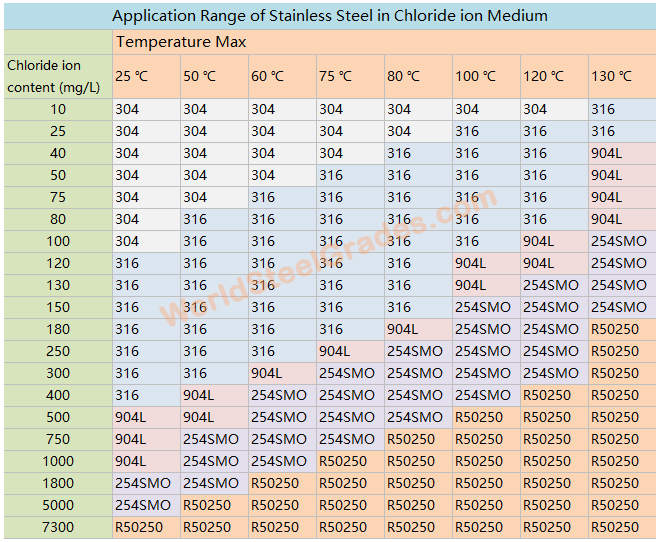
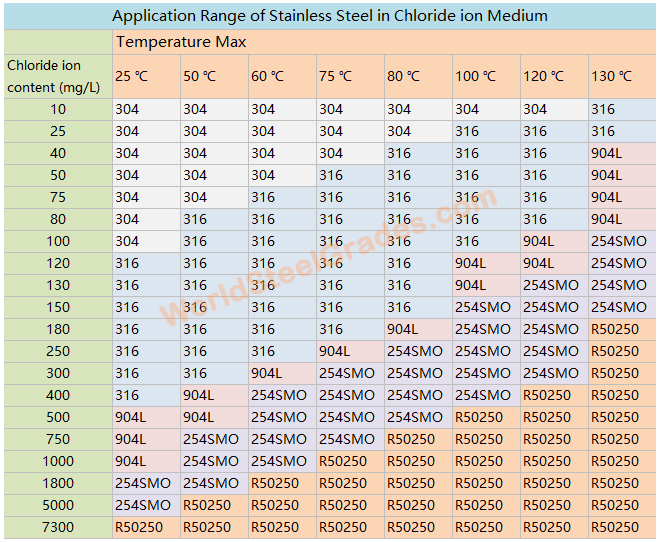
Applications of AISI SAE ASTM 316
The main uses of AISI 316 stainless steel are heat exchangers for pulp and paper equipment, dyeing equipment, film processing equipment, tubes, solenoid valves, clamps, balls, valve bodies, valve seats, nuts, rods valves, flanges and outdoor materials. use in coastal areas, etc. Also used in marine environment and as food grade stainless steel.
Equivalent to AISI 316
ASTM type 316 stainless steel equivalent to ISO, European EN (German DIN, British BSI, French NF), Japanese JIS and Chinese GB standard (for reference).
Table 3, type 316 stainless steel equivalent chart.
| Chart equivalent to AISI 316 | |||||||||||||||||||||
| USA | European Union | Germany | Great Britain (United Kingdom) | ISO | Japan | China | Australia | India | Russia | Korea | |||||||||||
| Standard | Type | Standard | Class (Steel Number) | Standard | Class (Steel Number) | Standard | Note | Standard | Note (ISO number) | Standard | Note | Standard | Note | Standard | Note | Standard | Note | Standard | Note | Standard | Note |
| AISI SAE, ASTM |
316 (UNS S31600) |
EN 10088-2; EN 10088-3 |
X5CrNiMo17-12-2 (1.4401) | DIN 17440 | X5CrNiMo17-12-2 (1.4401) | BS970:1996 | 316S16 | ISO 15510 | X5CrNiMo17-12-2 (4401-316-00-1) | JIS G4304 | SUS316 | GB/T 20878; GB/T 1220; GB/T 3280 |
06Cr17Ni12Mo2; 0Cr17Ni12Mo2 (old designation) |
316 | 04Cr17Ni12Mo2 | 08X17H13M2T | STS316 | ||||

